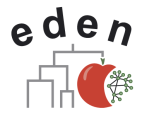Network analysis identifies weak and strong links in a metapopulation system
| by Alejandro F. Rozenfeld, Sophie Arnaud-Haond, Emilio Hernández-García, Víctor M. Eguíluz, Ester A. Serrăo and Carlos M. Duarte |
| Proceedings of the National Academy of Sciences of the USA (PNAS) 105, 18824-18829 (2008) |
| Output type: publication |
 URL: http://dx.doi.org/10.1073/pnas.0805571105 URL: http://dx.doi.org/10.1073/pnas.0805571105 |
The identification of key populations for conservation or eradication is a major
challenge in population ecology, particularly when dealing threatened,
invasive, and pathogenic species. Network theory was applied to map the genetic
structure in a metapopulation system using microsatellite data from populations
of the threatened seagrass Posidonia oceanica, as a model, sampled across its whole geographical range. This approach allowed the characterization of hierarchical population structure, and the identification of populations acting as hubs critical for relaying gene flow and sustaining the metapopulation system. This development opens major perspectives in a broad range of applications of molecular ecology and evolution such as conservation biology and epidemiology, where targeting specific populations is crucial.
The PDF file contains the manuscript text and movie1.avi is a supplementary movie.


